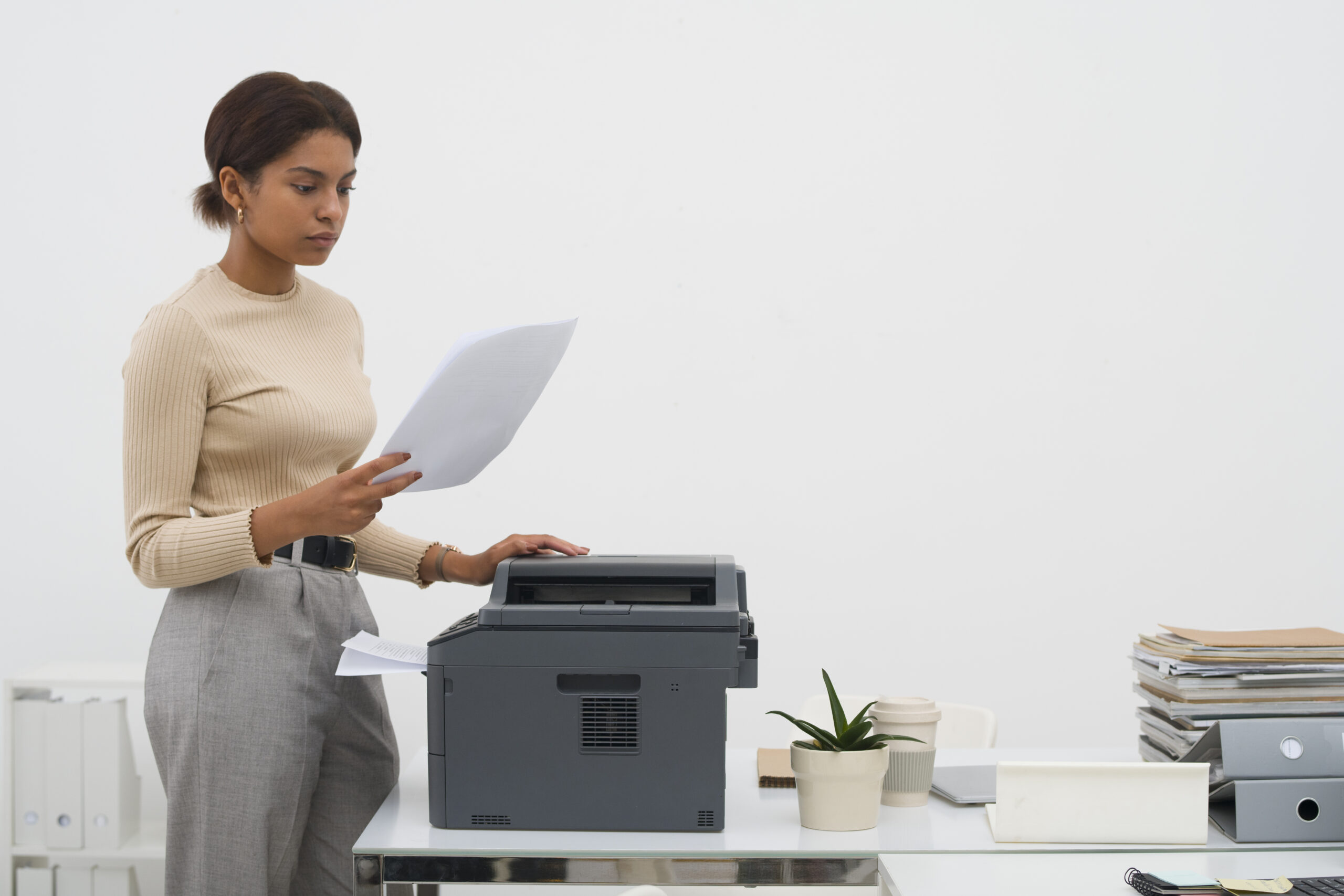Mobile Printing Guide: Print Directly from iPhone and Android

Introduction
Printing directly from your smartphone is no longer a futuristic convenience—it is a necessity. Whether you’re a student rushing to print last-minute assignments, a professional needing hard copies of contracts, or a home user printing travel tickets, mobile printing bridges the gap between digital and physical documents. Yet many people still struggle with setting up reliable mobile printing, often assuming it requires complex connections or special equipment.
This comprehensive guide—over 7000 words of detailed instructions, comparisons, and troubleshooting—will walk you through printing directly from both iPhone and Android devices. We will cover built-in methods like AirPrint and Mopria, explore third-party apps, examine wireless protocols, and even discuss Bluetooth and cloud printing. By the end, you will have the confidence to print seamlessly, whether you’re at home, in the office, or on the go.
Why Mobile Printing Matters in Today’s World
We live in a mobile-first world. A significant majority of emails, documents, and photos are now accessed first on smartphones rather than computers. Printing, however, has traditionally been tied to desktops and laptops. This mismatch creates frustration: users either delay printing until they reach a PC or transfer files manually via email or USB drives.
Mobile printing solves this problem by enabling direct, wireless printing. No cables, no detours. You can print while sitting in a meeting, standing at an airport, or relaxing at home. For businesses, this means improved productivity and reduced IT support calls. For individuals, it means convenience and efficiency.
Understanding the Basics of Mobile Printing
Before diving into iPhone and Android methods, let’s clarify the basics:
- Wireless Printing: Most modern printers include Wi-Fi, allowing devices on the same network to communicate without cables.
- Direct Printing Protocols: Standards like AirPrint (Apple) and Mopria (Android) provide universal compatibility, so you don’t need to install special drivers.
- Cloud Printing: Files are sent through the internet to your printer, useful for remote printing but requiring an account setup.
- Third-Party Apps: Many printer manufacturers provide apps (HP Smart, Canon Print, Epson iPrint, Brother iPrint&Scan) that unlock additional features like scanning and ink monitoring.
- Connectivity Options: Wi-Fi, Wi-Fi Direct, Bluetooth, and NFC all play roles in mobile printing depending on your printer model.
By understanding these categories, you’ll recognize which method best fits your device and printer setup.
Printing from iPhone
Apple devices are renowned for their simplicity, and printing is no exception. With AirPrint, most modern printers become instantly available to your iPhone or iPad. Let’s explore the different methods.
1. AirPrint (Built-In Option)
AirPrint is Apple’s native printing technology. It allows iOS devices to discover and print to compatible printers on the same Wi-Fi network without installing drivers or additional software.
Steps to use AirPrint:
- Ensure your printer supports AirPrint (check the manual or Apple’s official list).
- Connect both iPhone and printer to the same Wi-Fi network.
- Open the app you want to print from (Mail, Photos, Safari, etc.).
- Select Share → Print.
- Choose your AirPrint-compatible printer.
- Adjust settings (copies, range, duplex if supported) and tap Print.
AirPrint requires no setup beyond Wi-Fi, making it the most seamless method for iPhone users.
2. Manufacturer Apps for iPhone
If your printer doesn’t support AirPrint, or if you want more control (scanning, checking ink levels, ordering supplies), download the manufacturer’s official app. Popular options include:
- HP Smart: Print, scan, copy, and monitor ink status.
- Canon PRINT Inkjet/SELPHY: Direct photo printing, cloud services integration.
- Epson iPrint: Offers direct PDF printing, photo printing, and remote printing.
- Brother iPrint&Scan: Supports advanced scanning features and cloud connections.
Installation is straightforward: download from the App Store, connect to your Wi-Fi printer, and follow setup prompts. These apps often unlock more features than AirPrint alone.
3. Cloud and Email Printing for iPhone
Cloud printing services like HP ePrint allow you to print by sending an email attachment directly to your printer’s assigned email address. While less common than AirPrint, this is useful when you’re away from your home Wi-Fi but need to send a print job remotely.
Printing from Android
Android devices offer more variety in printing methods due to the diversity of manufacturers and ecosystems. The good news is that Android supports multiple universal standards and printing services.
1. Mopria Print Service
Mopria is to Android what AirPrint is to iOS: a universal printing standard supported by thousands of printer models. Many Android devices already come with Mopria pre-installed. If not, you can download it free from the Google Play Store.
Steps to use Mopria:
- Install the Mopria Print Service app if not already available.
- Connect your printer and Android device to the same Wi-Fi network.
- Open the file, photo, or webpage you want to print.
- Select Print from the menu.
- Choose your Mopria-enabled printer and adjust settings as needed.
Mopria simplifies printing for Android devices, ensuring you don’t need different apps for every printer brand.
2. Google Cloud Print Alternatives
Google Cloud Print was officially discontinued in 2020, leaving many Android users searching for alternatives. The void has been filled by manufacturer apps and Mopria, but some services (like HP Smart or Epson Connect) provide cloud-based remote printing similar to what Google once offered.
3. Manufacturer Apps for Android
Like iPhone users, Android owners can benefit from manufacturer apps. These apps often provide extra features such as scanning, direct cloud integration (Google Drive, Dropbox), and firmware updates.
4. Wi-Fi Direct Printing
Wi-Fi Direct allows your phone to connect directly to a printer without a router. Think of it like Bluetooth but faster and designed for larger data transfers.
Steps to use Wi-Fi Direct:
- Enable Wi-Fi Direct on your printer (usually through settings menu).
- On Android, go to Settings → Connections → Wi-Fi → Wi-Fi Direct.
- Connect to the printer’s direct network.
- Open your document/photo and select Print.
This is especially useful in places where Wi-Fi routers are unavailable.
Advanced Mobile Printing Methods
1. Bluetooth Printing
While less common today, Bluetooth printing remains relevant for compact mobile printers and certain office models. It doesn’t require Wi-Fi, making it useful in places without internet connectivity.
Steps:
- Enable Bluetooth on both your printer and smartphone.
- Pair the devices from your phone’s Bluetooth settings.
- Select your printer as the output option when printing.
2. NFC Printing
Near-Field Communication (NFC) allows you to tap your phone against a printer’s NFC tag to initiate printing. This is the fastest method for one-touch connections, but only works on NFC-supported models.
3. Email Printing
Many printers come with unique email addresses. By sending an email attachment to that address, the printer automatically prints the document. HP ePrint and Epson Email Print are popular services in this category.
4. Cloud Printing
Though Google Cloud Print was discontinued, manufacturers have replaced it with proprietary cloud systems. HP Smart, Epson Connect, and Canon Cloud Link allow you to send documents from anywhere in the world to your home or office printer.
Troubleshooting Mobile Printing Issues
Even the best mobile printing setups sometimes face issues. Common problems include:
- Printer not found: Ensure both devices are on the same Wi-Fi network.
- Slow printing: Switch to Wi-Fi Direct for faster connections.
- Blank pages: Update the printer firmware or app.
- App crashes: Clear cache or reinstall the app.
Regular updates to both printer firmware and mobile apps minimize disruptions.

Security in Mobile Printing
Security is often overlooked in mobile printing. Unsecured networks expose sensitive documents to interception. To stay safe:
- Always connect to trusted Wi-Fi networks.
- Enable password protection on cloud printing accounts.
- Update your printer’s firmware regularly.
- Disable Wi-Fi Direct when not in use to prevent unauthorized access.
Home vs Office Mobile Printing
For Home Users
Home users value simplicity and affordability. AirPrint and Mopria cover most cases. Occasional Bluetooth or email printing may be sufficient for casual use.
For Office Users
Businesses demand scalability, security, and advanced management. Enterprise printers support mobile device management (MDM), secure release printing, and detailed usage logs. Cloud integration allows teams to print from anywhere, while IT admins maintain centralized control.
